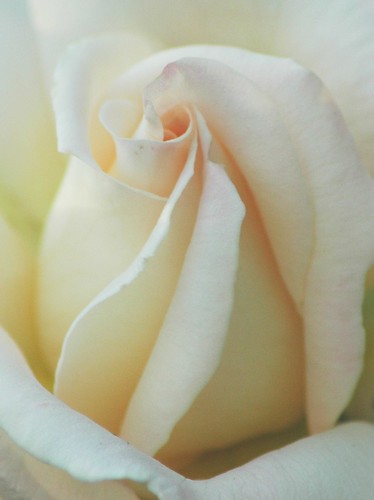
A couple of years ago Paloma, a fine lady from the
Perfume Addicts forum, sent me a gift of a lifetime: about 30 or so samples of rare vintage perfumes. To her this corner is dedicated, and I am hoping to be able to live up to the challenge of decoding the mysteries of these antique beauties.
Finding vintage Chypre by Coty at the midst of the stash was a dream come true. My unconditional love for chypres is infamous. My most favourite perfumes of all are chypres – Mitsouko, Vol de Nuit, Femme, Miss Dior… In fact, I love composing Chypres just as much as I love wearing them. The basic materials for Chypre compositions rely heavily on naturals (some of them restricted or even banned), including oakmoss, bergamot, patchouli, and my love of all times (yes, since skipping on the rocky and thorny hills with wild goats as a 4 year old): Labdanum. The behaviour of these building blocks is nothing shorter than magical. They transform other building blocks into a different realm, and so they do with the soul of the person who wears and smells them.
So it is no surprise that I have taken this precious sample with me on my trip. And it is no surprise that a few minutes after wearing this and starting to write my little essay about Chypre, my grandmother came in the door, and told me how wonderful I smell. When I told her what it was, I was soon informed that it was the scent of her departed mother – this and 4711 were the two she always worn. So I can proudly conclude that the love for Chypre runs in my family for the 4th generation – we are devoted to this genre since its very intention, as my great grandmother must have been a young lady when it was launched.
But my chypre bias put aside, smelling Chypre after digging through the stash, and more so, wearing it on my skin, is akin to searching for treasures in my grandmother’s treasure box she kept for us on a high shelf as children. Besides a stuffed lioness and a white seal which she kept from my baby-days, it was full of fancy fake jewelry and exotic beaded necklaces made of dyed tropical seeds and carved wood. Along with a couple of empty perfume bottles, this was sure to occupy me for hours. One of the empty flacons was Judith Miller’s signature scent, in a Biblical-inspired swirled-brownish gold glass bottle with a long neck. Altogether, this smelled like Coty’s Chypre which rests on my wrist this very moment.
There is something mysterious and delicate and muted about vintage scents. They are never cloying, and the scents are so well married to one another after years of living together in the same bottle, that it is far more difficult than before to discern the notes from one another. To begin with, Chypres possess the phenomenal quality of sucking in all the notes and transforming them in such a way that they are highly disguised and hardly separated from one another. This is due to the unusual characteristics of both oakmoss and labdanum.
In vintage Chypre, the sharpness of sage calms down after marrying for years with jasmine, roses, oakmoss, labdanum, patchouli and bergamot. There is something magical about sage that makes it soft and plump as a peach after it has been fully matured surrounded by those elements. Although bergamot is known for its importance in Chypre compositions, and this is what made Chypre the special and groundbreaking perfume it is – do not expect to find a citrus bergamot top note in this perfume. The bergamot serves as a counterpart to the mossy and earthy base, only to complement its sweetness and uplift the deep base notes. The top notes are more aldehydic than anything else. Chypre possesses the old fashioned softness that became the trademark of many a French perfumes to come. If Chypre is not the first chypre composition you ever smelled, you will probably not be knocked off your feet. But dlest we forget: this IS the first one. And that is where the genius of Chypre lies. Without it there would be no Mitsouko, Femme, Vol de Nuit, Miss Dior, Eau Sauvage, Le Parfum de Therese, Chant d’Aromes, Ma Griffe, Jolie Madam, Cuir de Russie, Private Collection, Paloma Picasso, No. 19, Christal, and the list goes on and on. Chypre is perhaps the single most versatile fragrance family that there is.
Upon application, Chypre is a gentle yet powderful aldehydic floral with hints of green sage and thyme. It softens to reveal a floral and somewhat soapy heart of jasmine and rose and a warmth of spice that is very subdued (only warmth, no sharpness). The quiet and persistent waves of oakmoss and labdanum gradually wash the shores with a sweet mossy earthiness that is only slightly honeyed and animalistic. As it softens further, it becomes more woody with a hint of well aged patchouli which never overpowers this balanced garden of Mediterranean aromas refined to become the definition of classic French perfumery.
Top notes: Sage, Thyme, Bergamot
Heart notes: Jasmine, Rose, Spices
Base notes: Oakmoss, Labdanum, Patchouli, Civet
 Diorissimo is the essence of spring, and as it’s genius creator Roudniska has said, it captures the scent of the flowers as well as the natural atomsphere where the little modest flowers grow - green foliage and damp and chilly forest floor.
Diorissimo is the essence of spring, and as it’s genius creator Roudniska has said, it captures the scent of the flowers as well as the natural atomsphere where the little modest flowers grow - green foliage and damp and chilly forest floor.





